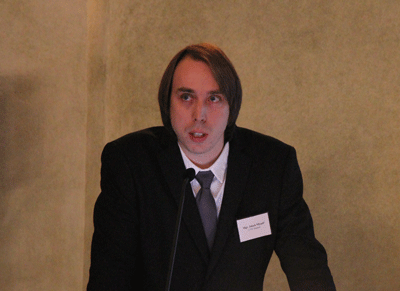Summary
USC Shoah Foundation's Visual History Archive (VHA) contains almost 52,000 interviews with Holocaust survivors and witnesses. Although the interviews are focused mostly on the World War II era, they were conducted as the narrators' complete life stories. VHA can therefore be effectively used in different scientific fields apart from historiography, e.g. economics, law, medicine, literature, anthropology or sociology. I will reflect on my user experience with the VHA during the ongoing sociological research, which is a crucial part of my dissertation thesis. On one hand, it is clear that the VHA user interface already provides very effective facilities for the identification and analysis of the relevant interviews and segments. On the other hand, however, there are still some serious technical limitations for this kind of research practice.
The speaker
 Jakub Mlynar is a postgradual sociology student at the Faculty of Arts of the Charles University in Prague. Since early 2010, he is working as a coordinator in Malach Center for Visual History at the Faculty of Mathematics and Physics of the Charles University, which is the Czech access point to the USC Shoah Foundation's Visual History Archive and other oral history archives. Among his current professional interests are the specifics of audiovisual autobiographic material and its value for sociology and educational praxis. In this context, he is also exploring the broader theoretical background in the topics of identity, time, (collective) memory and narrative theory in the social sciences and humanities.
Jakub Mlynar is a postgradual sociology student at the Faculty of Arts of the Charles University in Prague. Since early 2010, he is working as a coordinator in Malach Center for Visual History at the Faculty of Mathematics and Physics of the Charles University, which is the Czech access point to the USC Shoah Foundation's Visual History Archive and other oral history archives. Among his current professional interests are the specifics of audiovisual autobiographic material and its value for sociology and educational praxis. In this context, he is also exploring the broader theoretical background in the topics of identity, time, (collective) memory and narrative theory in the social sciences and humanities.